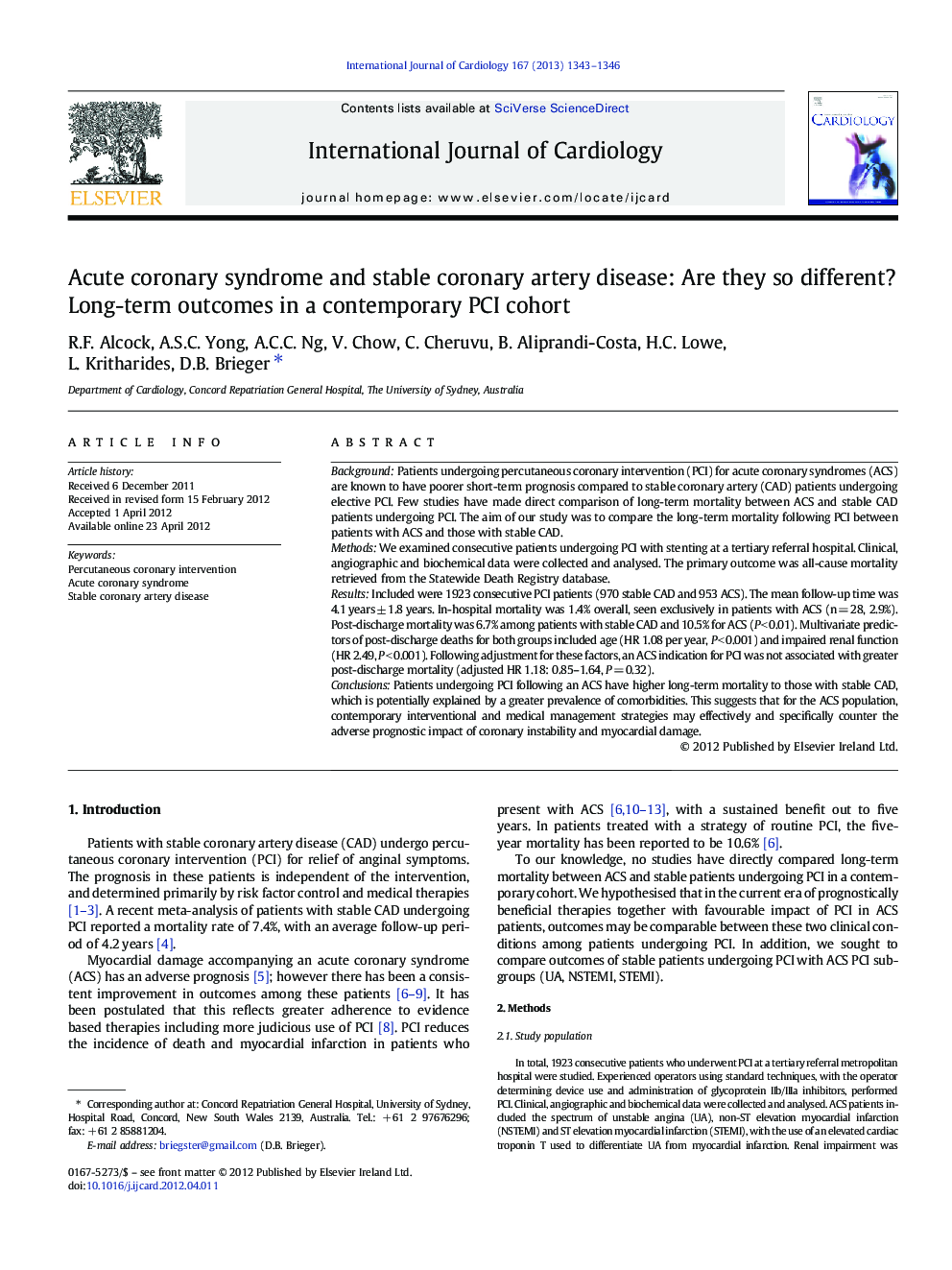| Article ID | Journal | Published Year | Pages | File Type |
|---|---|---|---|---|
| 5975525 | International Journal of Cardiology | 2013 | 4 Pages |
BackgroundPatients undergoing percutaneous coronary intervention (PCI) for acute coronary syndromes (ACS) are known to have poorer short-term prognosis compared to stable coronary artery (CAD) patients undergoing elective PCI. Few studies have made direct comparison of long-term mortality between ACS and stable CAD patients undergoing PCI. The aim of our study was to compare the long-term mortality following PCI between patients with ACS and those with stable CAD.MethodsWe examined consecutive patients undergoing PCI with stenting at a tertiary referral hospital. Clinical, angiographic and biochemical data were collected and analysed. The primary outcome was all-cause mortality retrieved from the Statewide Death Registry database.ResultsIncluded were 1923 consecutive PCI patients (970 stable CAD and 953 ACS). The mean follow-up time was 4.1 years ± 1.8 years. In-hospital mortality was 1.4% overall, seen exclusively in patients with ACS (n = 28, 2.9%). Post-discharge mortality was 6.7% among patients with stable CAD and 10.5% for ACS (P < 0.01). Multivariate predictors of post-discharge deaths for both groups included age (HR 1.08 per year, P < 0.001) and impaired renal function (HR 2.49, P < 0.001). Following adjustment for these factors, an ACS indication for PCI was not associated with greater post-discharge mortality (adjusted HR 1.18: 0.85-1.64, P = 0.32).ConclusionsPatients undergoing PCI following an ACS have higher long-term mortality to those with stable CAD, which is potentially explained by a greater prevalence of comorbidities. This suggests that for the ACS population, contemporary interventional and medical management strategies may effectively and specifically counter the adverse prognostic impact of coronary instability and myocardial damage.
